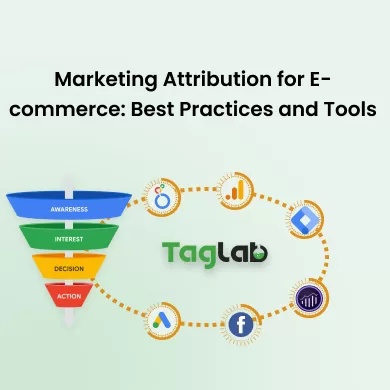Your cart is currently empty!
Ad Click Rate Metric Definition
Posted by:
|
On:
|
Ad Click Rate (CTR) is a key performance indicator (KPI) that measures the percentage of users who click on an ad after seeing it. This metric helps businesses understand the effectiveness of their ads in engaging users and driving traffic to their websites or landing pages.
Detailed Explanation
What is Ad Click Rate (CTR)?
The Ad Click Rate (CTR) is calculated by dividing the number of clicks an ad receives by the number of times the ad is shown (impressions) and multiplying the result by 100 to get a percentage. This metric indicates how well an ad is performing in terms of attracting clicks and engaging the audience.
How it Works?
CTR provides insight into the relevance and appeal of an ad. A higher CTR indicates that the ad is effective in capturing the audience’s attention and encouraging them to click through. Conversely, a lower CTR suggests that the ad may not be resonating with the target audience or that it needs optimization. CTR is often used to assess the performance of different ads, ad campaigns, and targeting strategies.
Types of Ad Click Rate Metrics
- Overall CTR: The click-through rate for all ads in a campaign or across the entire ad account.
- Ad-Specific CTR: The click-through rate for individual ads.
- Channel-Specific CTR: The click-through rate for ads on specific platforms (e.g., Google, Facebook).
Illustrative Scenarios
Examples
- If an ad receives 50 clicks and has 1,000 impressions, the CTR is (50 / 1,000) x 100 = 5%.
- If a business runs a campaign with 200 clicks and 10,000 impressions, the CTR is (200 / 10,000) x 100 = 2%.
Segmentation
Analyzing CTR by different segments (e.g., by ad copy, audience targeting, or ad placement) can provide deeper insights. For example, comparing CTR across different ad copies can help identify the most effective messaging and creatives.
Factors Influencing Ad Click Rate
- Ad Relevance: More relevant ads tend to have higher CTRs.
- Ad Copy and Creatives: Engaging ad copy and visuals can improve CTR.
- Targeting Accuracy: Precise audience targeting can lead to higher CTRs.
- Ad Placement: Ads placed in prominent positions often have higher CTRs.
- Call to Action (CTA): Clear and compelling CTAs can boost CTR.
Strategies to Improve Ad Click Rate
- Optimizing Ad Copy and Creatives: Creating engaging and relevant ad copy and visuals.
- Refining Audience Targeting: Using precise targeting to reach the most relevant audience.
- Testing Different Ad Variations: Running A/B tests to determine the most effective ads.
- Improving Ad Placement: Placing ads in high-visibility locations.
- Enhancing CTAs: Crafting clear and compelling calls to action.
CTR Benchmarks
CTR benchmarks vary by industry and type of ad. For example:
- Search Ads: Typically have higher CTRs due to high user intent.
- Display Ads: Generally have lower CTRs compared to search ads.
- Social Media Ads: CTRs can vary widely based on the platform and audience.
Comparing your CTR against industry standards can help gauge performance and set realistic goals.
Tools for Measuring CTR
- Google Ads: Provides detailed CTR metrics for search and display ads.
- Facebook Ads Manager: Offers CTR data for social media ads.
- Google Analytics: Tracks CTR for ads driving traffic to your website.
- Third-Party Ad Platforms: Tools like AdRoll and Taboola provide CTR metrics for their ad networks.
Common Pitfalls and Mistakes
- Ignoring Ad Relevance: Failing to create relevant ads can lead to low CTRs.
- Poor Audience Targeting: Ineffective targeting can result in low engagement and CTR.
- Neglecting Ad Copy and Creatives: Boring or irrelevant ad copy and visuals can harm CTR.
- Overlooking Placement: Poor ad placement can reduce visibility and CTR.
- Inconsistent Monitoring: Not regularly tracking CTR can result in missed opportunities for optimization.
Frequently Asked Questions
What is Ad Click Rate (CTR)?
Ad Click Rate (CTR) measures the percentage of users who click on an ad after seeing it. It is calculated by dividing the number of clicks an ad receives by the number of impressions and multiplying by 100.
Why is CTR important?
CTR is important because it helps businesses understand the effectiveness of their ads in engaging users and driving traffic. A higher CTR indicates better ad performance.
How can I improve my CTR?
Improving CTR can be achieved by optimizing ad copy and creatives, refining audience targeting, testing different ad variations, improving ad placement, and enhancing calls to action.
What factors influence CTR?
Factors influencing CTR include ad relevance, ad copy and creatives, targeting accuracy, ad placement, and the call to action (CTA).
What is a good benchmark for CTR?
A good benchmark for CTR varies by industry and type of ad. Search ads typically have higher CTRs due to high user intent, while display ads generally have lower CTRs. Social media ad CTRs can vary widely based on the platform and audience.



